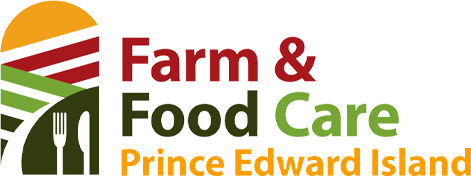Farming and the Environment

Farmers are closely linked to the environment. They depend on a healthy environment for their livelihoods, and recognize that environmentally sustainable practices are imperative for sustainable businesses.
Farmers on PEI follow regulations unique to our province such as strict crop rotations, establishment of buffer zones around waterways, and natural methods for conserving soil health.
Crop Rotation
Crop rotation is the practice of planting different crops sequentially on the same plot of land to improve soil health, optimize nutrients in the soil, and combat pest and weed pressure. For example, an island farmer has planted a field of corn. When the corn harvest is finished one year, he might plant soybeans the following year, since corn consumes a lot of nitrogen and soybeans return nitrogen to the soil. Many island farmers have a three or four-year crop rotation.
Buffer Zone
Buffer zones are next to all watercourses and wetlands. They are 15 metres wide. For freshwater streams they are measured from the edge of the sediment bed. For all tidal areas they are measured from the top of the bank. Tidal areas include the salt water part of rivers, bays and the outer coastline. For wetlands, buffer zones are measured from the edge of the wetland vegetation. No agriculture crops or pesticides are allowed within the buffer zone. For more info check out PEI’s Buffer Zone Fact Sheet.
Hedgerow
A hedgerow is a row of shrubs and trees that separate one piece of land from another. They serve a few purposes—to mark the boundary of a property; act as a wind barrier to soil erosion; create privacy, filter noise from neighbouring properties and roads; provide habitat and travel corridors for a great diversity of wildlife; and add colour and beauty to the landscape. They have also been useful to create a barrier to the movement of livestock; and protect livestock and buildings from winter winds.
Cover Crops
Cover crops play an important role in maintaining soil quality and productivity on island farms. Cover crops are planted after a crop is harvested in the late Summer and Fall months and either plowed under to be planted the following spring or harvested the following summer. They help reduce soil erosion, add organic matter to the soil, reduce nutrient losses, and improve soil fertility. One example of cover crops is Winter Wheat.

For more info on island farming and the environment check out Farm & Food Care PEI’s website: Farming and the Environment



